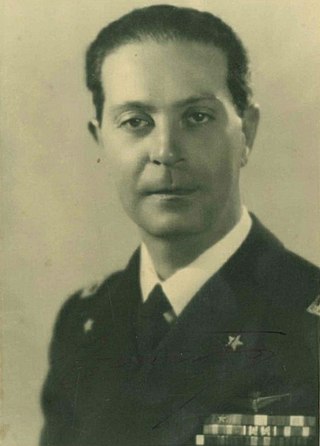
The Decima Flottiglia MAS was an Italian flotilla, with marines and commando frogman unit, of the Regia Marina. The acronym MAS also refers to various light torpedo boats used by the Regia Marina during World War I and World War II.

HMS Penelope was an Arethusa-class light cruiser of the Royal Navy. She was built by Harland & Wolff ; her keel was laid down on 30 May 1934. She was launched on 15 October 1935, and commissioned 13 November 1936. She was torpedoed and sunk by the German U-boat U-410 near Naples with great loss of life on 18 February 1944. On wartime service with Force K, she was holed so many times by bomb fragments that she acquired the nickname "HMS Pepperpot".

The Battle of Leros was a combat over the Greek island of Leros between the Allies defending it and invading forces of Nazi Germany waged between 26 September and 16 November 1943. Regarded as the central event of the Dodecanese campaign of the Second World War, the term is widely used as an alternative name for the whole campaign. After the Armistice of Cassibile the Italian garrison on the Greek island Leros was strengthened by British forces on 15 September 1943. The battle began with German air attacks, continued with the landings on 12 November, and ended with the capitulation of the Allied forces four days later.

Vasilissa Olga was the second and last destroyer of her class built for the Royal Hellenic Navy in Great Britain before the Second World War. She participated in the Greco-Italian War in 1940–1941, escorting convoys and unsuccessfully attacking Italian shipping in the Adriatic Sea. After the German invasion of Greece in April 1941, the ship escorted convoys between Egypt and Greece until she evacuated part of the government to Crete later that month and then to Egypt in May. After the Greek surrender on 1 June, Vasilissa Olga served with British forces for the rest of her career.
The Torpedoboot Ausland were small destroyers or large torpedo boats captured by Nazi Germany and incorporated into the Kriegsmarine. They were assigned a number beginning with TA.

The following events occurred in September 1943:
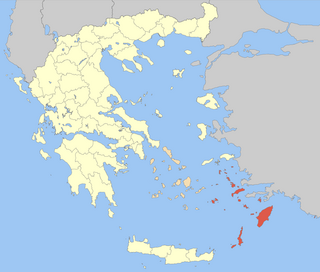
The Dodecanese campaign was the capture and occupation of the Dodecanese islands by German forces during World War II. Following the signing of the Armistice of Cassibile on 3 September 1943, Italy switched sides and joined the Allies. As a result, the Germans made plans to seize control of the Dodecanese, which were under Italian control. The Allies planned to use the islands as bases to strike against German targets in the Balkans, which the Germans aimed to forestall.

HMS Sickle was a third-batch S-class submarine built for the Royal Navy during World War II. Completed in 1942, she made her initial war patrol off the Norwegian coast. Sickle then sailed to Gibraltar, from where she conducted one patrol, then to Algiers, French North Africa. From 10 May to 10 October, the boat patrolled the Gulf of Genoa five times and sank a German submarine as well as three minesweepers and an escort ship. She then moved to Beirut, French Lebanon, and conducted two patrols in the Aegean Sea, sinking three caïques and a merchant ship, in addition to landing resistance operatives in Greece.
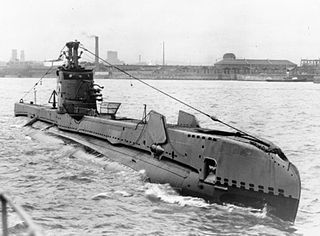
HMS Saracen was a third-batch S-class submarine built for the Royal Navy during the Second World War. Completed in 1942, Saracen conducted a patrol in the North Sea where she sank a German U-boat. She was then assigned to the 10th Submarine Flotilla in Malta, from where she made three patrols; on her second, she sank an Italian submarine. Saracen was then reassigned to the 8th Submarine Flotilla, based in Algiers, French North Africa.
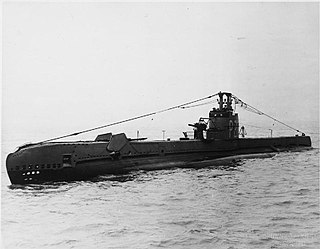
HMS Sahib was a third-batch S-class submarine built for the Royal Navy during the Second World War. She was launched on 19 January 1942 and commissioned on 13 May 1942. She was the only British naval vessel to bear the name Sahib.

HMS Sportsman was a third-batch S-class submarine built for the Royal Navy during World War II. Completed in 1942, she spent most of the war serving in the Mediterranean Sea. After an initial patrol off Norway, she sank the heavy transport Général Bonaparte in the Mediterranean in 1943 and missed a French oil tanker. She was heavily damaged after a mistaken attack by an Allied bomber, and was sent east after repairs to participate in operations in the Black Sea. After the operation was cancelled, Sportsman patrolled the Aegean Sea, sending several Greek and German ships to the bottom. She sank the German transport SS Petrella in early 1944 despite it being clearly marked as a prisoner-of-war ship, killing 2,670 out of 3,173 Italians aboard. Sportsman sank several more ships, and suffered minor damage when she was detected and sighted while attempting to attack a convoy.

HMS Eclipse was an E-class destroyer of the Royal Navy that saw service in the Atlantic, Arctic, and Mediterranean theatres during World War II, until sunk by a mine in the Aegean Sea on 24 October 1943.

Operation Abstention was the code name of a British invasion of the Italian island of Kastelorizo (Castellorizo) off the Turkish Aegean coast, during the Second World War. The goal was to establish a motor torpedo-boat base to challenge Italian naval and air supremacy on the Greek Dodecanese islands. The British landings were opposed by Italian land, air and naval forces, which forced the British troops to re-embark amidst some confusion and led to recriminations between the British commanders for underestimating the Italians.
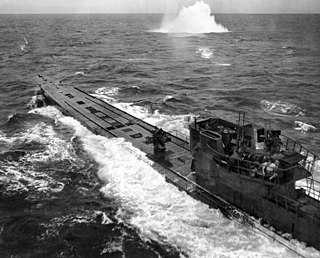
The Gruppe Monsun or Monsoon Group was a force of German U-boats (submarines) that operated in the Pacific and Indian Oceans during World War II. Although similar naming conventions were used for temporary groupings of submarines in the Atlantic, the longer duration of Indian Ocean patrols caused the name to be permanently associated with the relatively small number of U-boats operating out of Penang. After 1944, the U-boats of the Monsun Gruppe were operationally placed under the authority of the Southeast Asia U-boat Region.
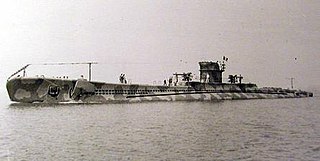
The Cagni or Ammiraglio Cagni class was a class of submarines built for Italy's Regia Marina during World War II.
German submarine U-177 was a Type IXD2 U-boat of Nazi Germany's Kriegsmarine during World War II. The submarine was laid down on 25 November 1940, at the DeSchiMAG AG Weser yard in Bremen, as yard number 1017. She was launched on 1 October 1941, and commissioned on 14 March 1942, under the command of Kapitänleutnant Wilhelm Schulze. After a period of training with the 4th U-boat Flotilla at Stettin, the boat was transferred to the 10th flotilla on 1 October 1942, and based at Lorient, for front-line service, she was then reassigned to the 12th flotilla at Bordeaux on 1 December.
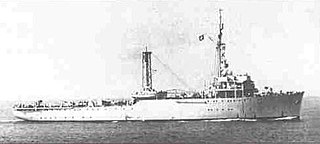
The Yugoslav minelayer Zmaj was built in Weimar Germany for the Royal Yugoslav Navy in the late 1920s. She was built as a seaplane tender, but does not appear to have been much used in that role and was converted to a minelayer in 1937. Shortly before the Axis invasion of Yugoslavia in April 1941 during the Second World War, she laid minefields along the Dalmatian coast, perhaps inadvertently leading to the sinking of two Yugoslav passenger ships. Slightly damaged by Italian dive bombers and then captured by the Italians during the invasion, she was soon handed over to the Germans. While in their service the ship was renamed Drache, had her anti-aircraft (AA) armament improved, and was used as a seaplane tender and later as a troop transport. In the latter role she participated in over a dozen convoys between the Greek port of Piraeus and the Greek island of Crete between December 1941 and March 1942.
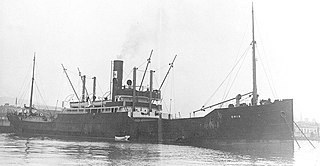
SS Oria was a Norwegian steamer that sank on 12 February 1944, causing the death of some 4,095 Italian prisoners of war, 21 Greeks and 15 Germans. It was one of the worst maritime disasters in history, and the worst maritime disaster caused by the sinking of a single ship in the Mediterranean Sea.

The Battle of the Campobasso Convoy was a naval engagement between three British Royal Navy destroyers and the Regia MarinaSpica-class torpedo boatPerseo which took place off Cape Bon in the Mediterranean Sea on the night of 3/4 May 1943. The Italians were escorting the 3,566-gross register ton (GRT) freighter Campobasso to Tunisia.

The Battle of Rhodes took place between Italian and German forces for the control of Rhodes, a Greek island in the Italian (1912–1943) Dodecanese islands in the Aegean Sea. The Italian authorities in Rome had been negotiating the Armistice of Cassibile with the Allies and the Germans had been manoeuvring to launch a coup in Italy and Italian-garrisoned areas in southern Europe, at the first sign of treachery to the Axis. German troops had been sent to Rhodes with tanks, artillery and air support. The British deception Operation Mincemeat intended to divert German attention from Sicily may have added to German apprehensions over the Aegean area.

















